Three years ago, the Toronto Maple Leafs’ Cup window seemed almost boundless. A 19-year-old William Nylander was tearing it up in the American Hockey League, an 18-year-old Mitch Marner was making the Ontario Hockey League look like pond hockey, while first overall pick and franchise player Auston Matthews was on his way over from Switzerland.
Fast-forward three seasons and each of the Maple Leafs’ young guns have finished their entry-level contracts, graduating onto their first deals as restricted free agents. We’ve already seen pricey if not monstrous contracts handed out to both Matthews and Nylander, with another potentially on the way for Marner. If Marner gets the money that he’s apparently looking for, it will mean that Toronto’s big four will take up around $40 million – just under half the team’s total cap space.
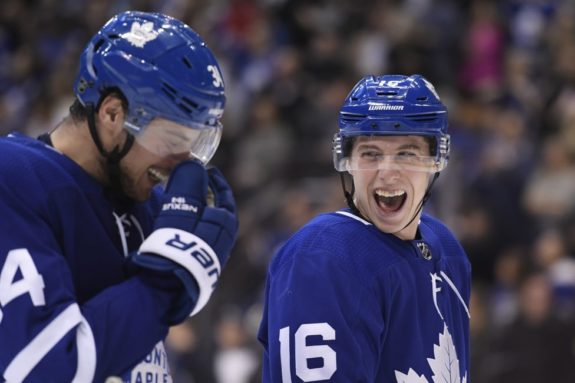
It has quickly become apparent that the Maple Leafs’ vision of locking up their core long-term is nothing more than a wistful dream. With that, their Cup window may be more limited than previously imagined.
The Maple Leafs are now on the clock. And if they want to win, they’ll have to do it relatively soon. Here’s why:
Young Guns Could Walk in Five Years
Matthews and Nylander are both signed for five more years with their deals set to expire in 2024-25, and Marner is reportedly seeking a short-term deal as well. That’s cause for concern in Toronto.
We’ve seen a recent shift in the culture of the NHL as players and agents now have more power than ever before. Stars like Matthews are demanding more money at a younger age before they even reach their potential. The trend for players also seems to be signing shorter-term deals in order to hit unrestricted free agency in their mid-20s, which allows them to cash in as much as possible. Matthews, for instance, will still be just 26 years old when his current contract expires.
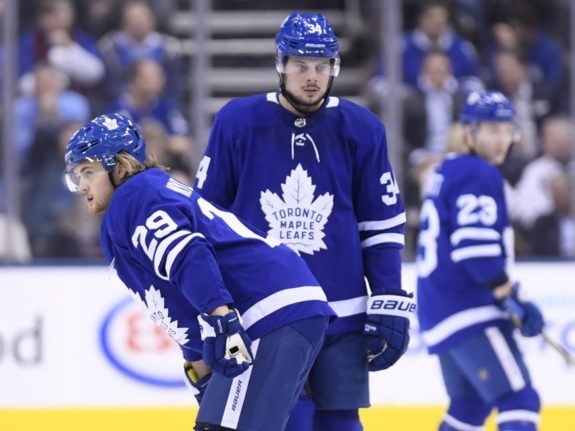
The NBA has already blazed the trail with superstar players having the power to reshape the league almost singlehandedly. The NHL isn’t there just yet, but young players like Matthews have taken notice, and they seem to be following suit.
Can you blame them? Careers in professional sport are short and volatile; players need to earn as much money as they can, as early as they can. This is not to say that any of these players will necessarily walk when their contracts expire, but it’s not out of the question at all. We saw John Tavares leave the New York Islanders after spending the first nine years of his career there. He was frustrated by the team’s lack of success and believed the Maple Leafs could offer a better chance at winning.
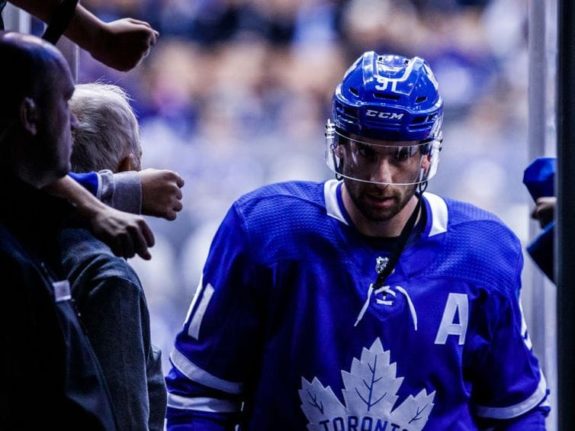
But if the Maple Leafs don’t win in the next five years, maybe their young stars feel the same way that Tavares did. Maybe Matthews will want to go back home to Arizona or California to grow the game of hockey down south, or have a better shot at the Cup.
John Tavares Is Aging (And Declining)
Tavares just scored a career-high 47 goals and 88 points. There’s a good chance he’ll never do it again.
Research shows that in terms of productivity, NHL players generally peak around the ages of 23 to 25, then decline gradually after that. The good news for Tavares, though, is that most players don’t fall off a cliff once they turn 30, and being an elite player, he’ll likely maintain a high level of production even into his 30s.
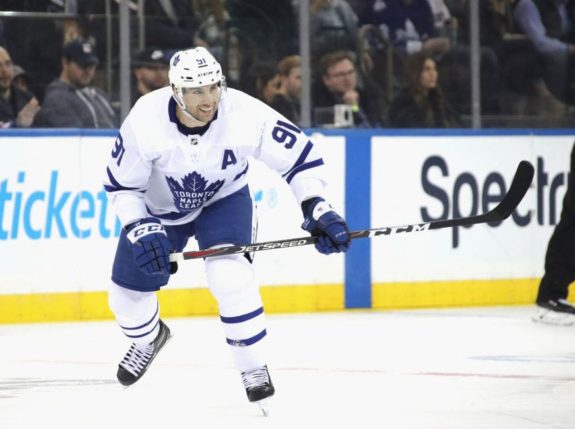
Regardless, it’s clear that like every other player before him, Tavares will decline. And at some point, he will fall off substantially. Whether that’s at 30 or 35 is yet to be seen, but the Maple Leafs will want to make use of Tavares’ best remaining years considering he turns 29 in September, and he won’t be a superstar forever.
Other Core Pieces Will Need Raises
Outside of the Maple Leafs’ big four, there are other core pieces that will need new contracts (and big raises) relatively soon.
Morgan Rielly and Frederik Andersen are two of those key pieces, both in their primes and signed to team-friendly deals at $5 million per season. However, Rielly’s contract will expire in three seasons, and Andersen’s in just two. Coming off a career-high 72 points, Rielly’s value is undeniable, while Andersen has been the backbone of the team for the past three seasons. Both players will be due sizable raises, right in the middle of the Maple Leafs’ window of contention.
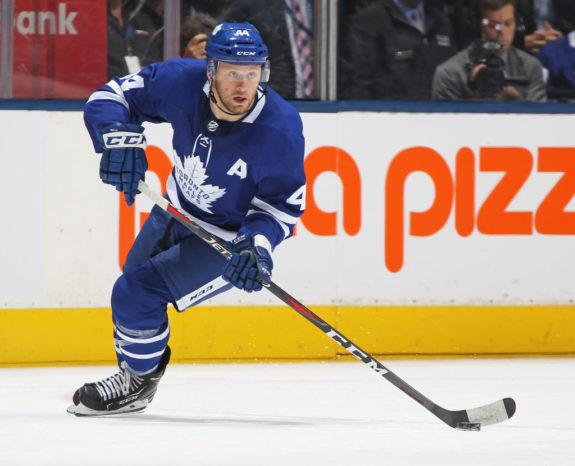
Andersen, who will be 32 when he takes the ice on his next contract, could obviously walk in free agency – and letting him walk might be the smartest decision for the Maple Leafs. But that means they’ll somehow have to find a suitable replacement for a top-10 goaltender, which is much easier said than done.
The Maple Leafs will surely want to re-sign Rielly, but who knows what he’ll command after a few more dominant seasons. The sky is the limit for Rielly, and that will make it even harder for Toronto to surround their core with effective secondary pieces.
Cup Windows Are Fleeting
We hear about NHL dynasties all the time: the Pittsburgh Penguins won three Cups from 2009 to 2017, the Chicago Blackhawks won three from 2010 to 2015, and the Los Angeles Kings won twice from 2012 to 2014. But the reality is that for most teams, Cup windows are relatively short.
The Athletic’s Craig Custance wrote a recent piece about Stanley Cup contenders, and how long Cup windows stay open. There are clearly a few dominant teams like the Boston Bruins, Pittsburgh Penguins, and San Jose Sharks who have remained relevant for 10 years or more. But even while being considered contenders so often, Boston has only won once since 2009. San Jose has yet to win at all.
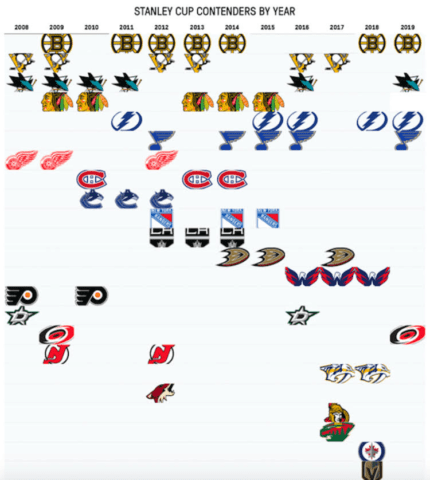
For most NHL teams the Cup window is much shorter, and as we’ve seen, being a contender doesn’t guarantee playoff success. Only six of the 23 teams listed have had Cup windows of longer than three years, and three years appears to be the most common length of a team’s Cup window.
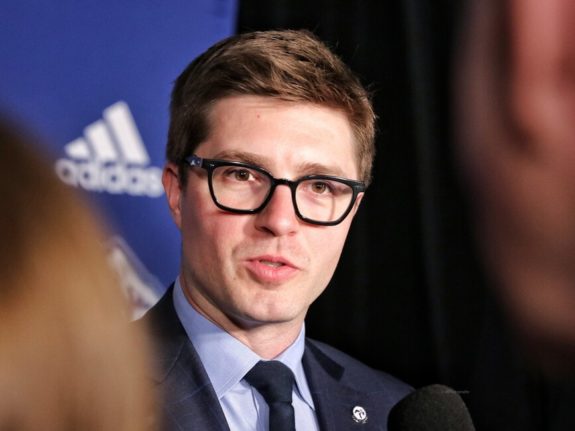
For the Maple Leafs, this means that it’s time to go all-in. They’re going to have their entire core, including Rielly and Andersen, locked in for the next two seasons, and their big four signed for the next five or so (depending on what Marner settles on). General manager Kyle Dubas will have to be diligent about continuing to fill the roster with cheap, effective depth pieces while also deciding which secondary pieces are worth paying and keeping.
The future is still bright, but that clock won’t stop ticking.
Cap information from CapFriendly
Player stats from Hockey-Reference